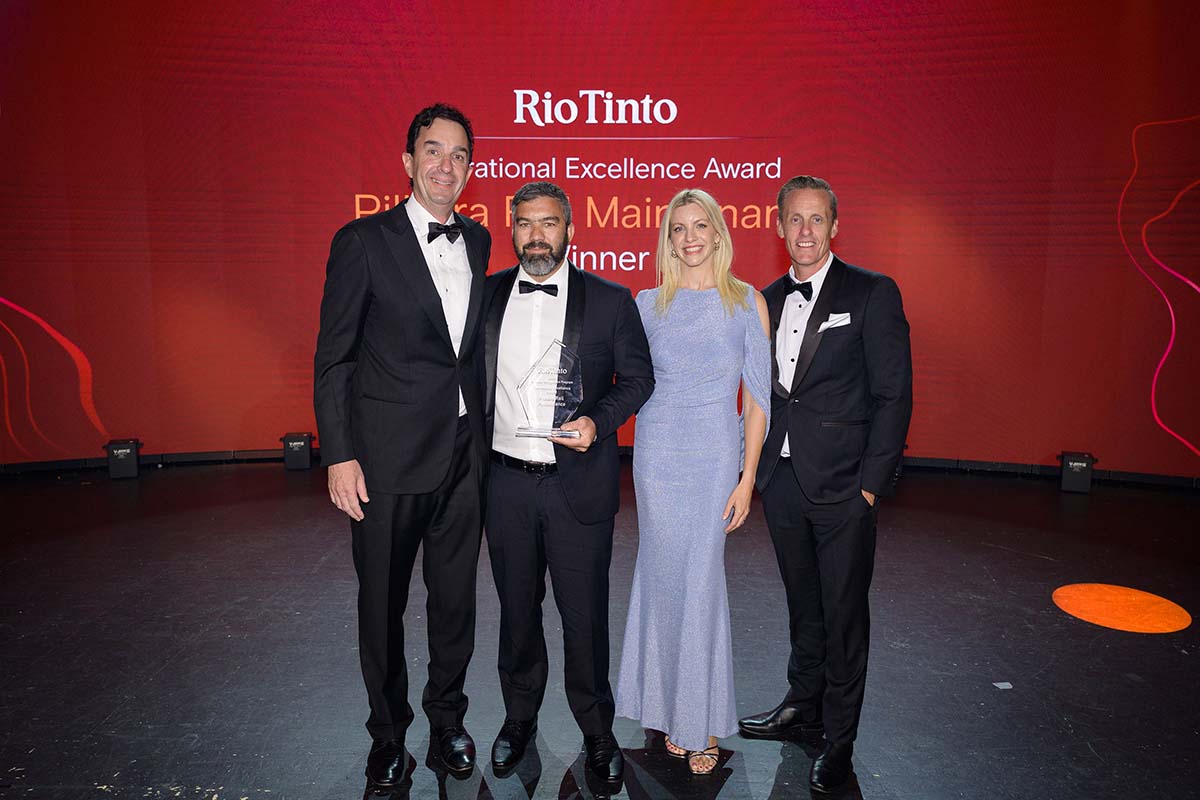AMR: Can you share the story behind how Pilbara Rail Maintenance (PRM) started and what you believe are the key factors that contributed to its success?
CP: As a newcomer in the rail industry, my co-founder lan Abbott and I recognised that we needed more than just good banter to succeed.
Starting PRM as a start-up five years ago with no clients or track record, we aimed to fill critical gaps in service delivery, expertise, and technology.
Through a local-first approach, PRM has become one of the largest employers in the Pilbara, WA, region, providing career pathways and training in an industry facing global skills shortages.
We now have hundreds of experienced employees, a fleet of specialist rail machinery and fabrication premises.
AMR: What insights can you provide about the current state and future trends in the mining industry?
CP: Recognising the need for innovation, I believe that investing in advanced equipment and automation can revolutionise project completion, reducing the reliance on labour in the challenging Pilbara environment.
ESG considerations are crucial in the rail industry and, at PRM, we are committed to being leaders in this realm.
We anticipate the continued use of alternative fuels such as hydrogen to power heavy haul locomotives, further enhancing sustainability in rail operations.
AMR: What exciting developments or projects do you have in the works at PRM that you can share with us?
CP: At PRM, we have several exciting developments in progress.
One initiative I’m particularly proud of involves exploring the use of robotics for track maintenance and construction, allowing us to perform complex tasks in challenging settings.
We also acquired unique narrow head flash-butt welders, enabling us to build entire railway turnouts without aluminothermic welds, much to the satisfaction of our clients.
Additionally, our implementation of a proximity detection system on our hi-rail machines enhances safety by preventing contact with operating equipment.
Looking ahead, PRM’s growth and success have positioned us to open a large facility in Perth and expand our services to other regions across Australia.
AMR: Throughout your journey with PRM, what are some of the notable challenges you have faced and how have you managed to overcome them?
CP: PRM faced its fair share of challenges as a new business.
Founding the company with lan, while my wife and I were expecting our first child, added personal complexity.
Relocating to a remote town, obtaining finance, finding premises, attracting staff and juggling the demands of a baby were hurdles we faced.
Additionally, my wife experienced post-natal depression, requiring ongoing care, while I worked to ensure the survival and growth of the business.
In our second year, the COVID-19 pandemic further impacted operations, causing workforce availability and financial issues.
Our management team adapted, diversifying talent and meeting client expectations, sustaining growth despite labour shortages.
AMR: You were recently nominated for a Rio Tinto supplier award for innovation. Can you touch on the developments that saw you recognised?
CP: Our nomination acknowledged our investment in a transformative track maintenance technology that enhances safety, precision and delivery time.
The smart track laying system integrates a custom sleeper laying attachment with a high rail excavator and machine-controlled guidance system.
It enables a single operator to lift and place steel sleepers simultaneously, eliminating the need for rail surveyors and multiple technicians.
Currently, we are utilising this technology for Rio Tinto’s track renewal campaign in the Pilbara.
AMR: Could you elaborate on the importance of rail maintenance in the mining sector and how PRM has played a significant role in this area?
CP: Proper rail maintenance and construction are vital in the mining sector, which led to the establishment of PRM.
Railways serve as the crucial link between mines and markets globally.
Inadequate track maintenance leads to performance issues, transport disruptions and costly ore stockpiling at mines.
Heavy haul networks require ongoing investment in high-quality maintenance services to ensure safe and consistent delivery of products to the market.
As a trusted partner to the mining industry, PRM employs a 200-strong team in the Pilbara region and operates the largest mobile high-rail fleet, catering to major miners like Rio Tinto that require track maintenance from the track itself.
AMR: In your opinion, what sets PRM apart from its competitors in the rail maintenance industry and how have you maintained a competitive edge?
CP: As a young and innovative company in a historic industry, PRM continually pushes boundaries and invests in transforming rail infrastructure.
Our success stems from significant investments in people, equipment and innovation.
Through advancements like our smart track laying system and the use of robotics, we drive step changes in rail maintenance and construction.
Instead of relying on traditional methods, we question and engineer ingenious approaches for safer, faster and more efficient outcomes.
ESG values are integral to our corporate identity, and we strive to improve industry diversity, environmental impact and provide a safe workplace.
Safety is a top priority, exemplified by our investment in proximity detection systems that minimise risks of contact between personnel and operating machinery.
AMR: How do you approach innovation and technological advancements within PRM and what impact have they had on the company’s operations and services?
CP: At PRM, innovation is central to our values.
We constantly seek smarter approaches to track works, driven by our clients’ ambitions for safety and productivity.
Recently, we partnered with a specialist company to procure robotic equipment, combining it with our own PRM equipment and a unique methodology.
This approach, a first in the heavy haul rail industry, allowed us to successfully complete complex rail works in challenging Pilbara terrain.
Our in-house workshop facility played a key role, enabling us to fabricate and modify equipment, including panel lifters, for work in otherwise inaccessible areas such as gorges and cliffs.



